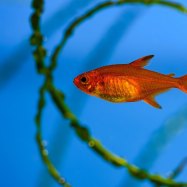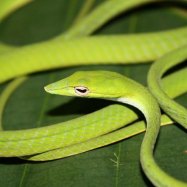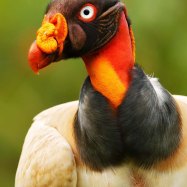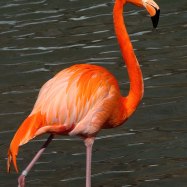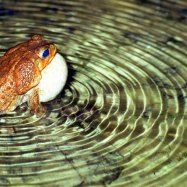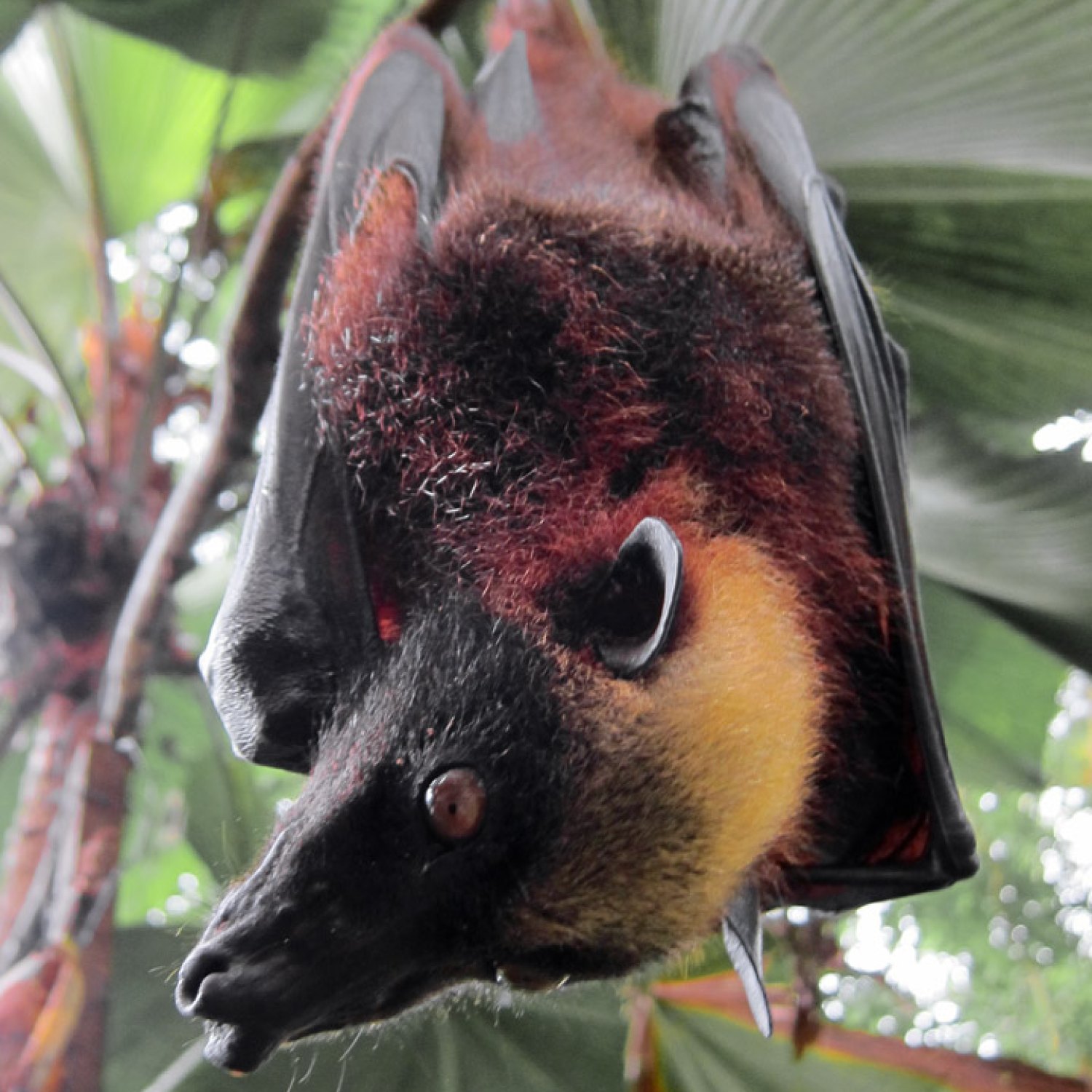
Golden Crowned Flying Fox
Up to 1.2 meters (3.9 feet)
The Golden Crowned Flying Fox, native to the Philippines, is one of the largest bat species in the world, with a wingspan of up to 1.2 meters. It belongs to the Pteropodidae family and is commonly found in the Luzon and Visayas regions. These large and robust animals play a vital role in pollination and seed dispersal in their habitat. Help protect these gentle giants and their important ecological role. #FlyingFox #PhilippineSpecies #Conservation
Animal Details Summary:
Common Name: Golden Crowned Flying Fox
Kingdom: Animalia
Habitat: Rainforests, mangroves, and coconut plantations
The Fascinating World of the Golden Crowned Flying Fox
Have you ever heard of a flying fox? It may sound like a mythical creature, but it is a real animal that can be found in the tropical forests of the Philippines. Among the various species of flying foxes, one stands out with its unique characteristics and beauty – the golden crowned flying fox. This remarkable creature has captured the hearts of many with its massive size, distinct coloration, and interesting behaviors. In this article, we will dive into the fascinating world of the Golden Crowned Flying Fox and uncover its unique features and way of life Golden Crowned Flying Fox.An Animal of Many Names
The Golden Crowned Flying Fox goes by several names, such as Acerodon jubatus in the scientific community, and simply the golden crowned flying fox or golden-capped fruit bat in English. Its name is derived from its golden crown-like fur on top of its head, which gives the species a regal and majestic appearance. The local people in the Philippines also refer to it as "kabog," which means scare in Visayan dialect, as its wingspan and large size can cause quite a stir among villagers.A Member of the Animal Kingdom
Like all living creatures, the Golden Crowned Flying Fox belongs to the animal kingdom. It is a member of the class Mammalia, which means it is a mammal. Its characteristics, such as being warm-blooded, having mammary glands, and giving birth to live young, are what make it a mammal. It also belongs to the order Chiroptera, which is the scientific name for bats. However, unlike other bats, flying foxes have large eyes, a keen sense of smell, and are not able to use echolocation to navigate their surroundings.A Natural Habitat for the Golden Crowned Flying Fox
The natural habitat of the Golden Crowned Flying Fox includes the tropical rainforests, mangroves, and coconut plantations of the Philippines German Sheprador. These lush and dense forests are home to a variety of fruit trees, which provide the ideal food source for the flying fox. Furthermore, these forests are also abundant in tall trees with large canopies that provide shelter and protection for the species.A Plant-Based Diet
As a herbivorous animal, the Golden Crowned Flying Fox feeds primarily on fruits, nectar, and pollen. This is crucial for the ecosystem as they play a significant role in pollination and seed dispersal. They also have a unique way of feeding, which involves using their large front teeth to pierce through the fruit's skin and suck out the nectar or juice. In some cases, they may even carry the fruit to a nearby tree to consume it, playing a crucial role in the dispersal of seeds.Geographical Distribution
The Golden Crowned Flying Fox is endemic to the Philippines, which means it can only be found in this country. Specifically, the species can be found in the Luzon and Visayas regions of the archipelago. In these areas, they can be observed roosting in large colonies, usually in the thousands, in trees with large canopies.The Country of Origin
The Philippines is the country of origin for the Golden Crowned Flying Fox. With its diverse and abundant forests, it is the perfect habitat for this unique species to thrive. However, due to threats to its natural habitat and hunting, the population of the Golden Crowned Flying Fox has drastically reduced, making it a vulnerable species.Where to Find Them
If you want to catch a glimpse of the Golden Crowned Flying Fox, the best place to look would be the Subic Bay Freeport Zone in the Philippines. This spot is known for its abundant wildlife and conservation efforts, making it a perfect place to observe these magnificent creatures in their natural habitat.The Dark Beauty of the Golden Crowned Flying Fox
The Golden Crowned Flying Fox possesses a unique and striking appearance with its dark brown to black colored fur. Its body shape is also large and robust, measuring up to 1.2 meters (3.9 feet) in length, making it one of the largest bat species in the world. This size, combined with its impressive wingspan of up to 1.5 meters (4.9 feet), makes it a breathtaking sight to behold when they take flight at dusk.A Symbol of the Philippine Ecosystem
The Golden Crowned Flying Fox plays a crucial role in the Philippine ecosystem. It acts as a pollinator and seed disperser for various fruit trees, contributing to the growth and sustainability of the forests. As a result, its presence is vital to maintain the balance and health of the ecosystem, making it a symbol of the country's natural heritage.The Threat of Extinction
Sadly, the Golden Crowned Flying Fox is facing numerous threats to its survival. One of the primary threats is the destruction of their natural habitat due to deforestation and urbanization. Climate change and habitat loss have also led to food scarcity, pushing the species to travel farther distances in search of food. Additionally, the hunting and consumption of the species have greatly reduced their population.Efforts to Protect and Conserve
Fortunately, conservation efforts are underway to protect and preserve the Golden Crowned Flying Fox. Several organizations and government agencies are working towards preserving their natural habitat, educating the public about the species' importance, and regulating hunting and consumption. These efforts have resulted in an increase in the Golden Crowned Flying Fox population, giving hope for their continued survival.The Cultural Significance of the Golden Crowned Flying Fox
Aside from its essential role in the ecosystem, the Golden Crowned Flying Fox holds cultural significance for the Filipino people. They are depicted in many Philippine myths and legends, often portraying them as mystical creatures with magical abilities. In some communities, they are also believed to bring good luck and prosperity. This cultural significance further highlights the importance of protecting and preserving the species for future generations.In Conclusion
The Golden Crowned Flying Fox is a remarkable animal that has captured the hearts of many with its unique characteristics and significant role in the ecosystem. As a herbivorous mammal endemic to the Philippines, it is a symbol of the country's natural heritage and cultural significance. However, like many other species, it is facing threats to its survival, making conservation efforts necessary. With continued efforts to protect and preserve its natural habitat, we can ensure that these magnificent creatures continue to soar and thrive in the tropical forests of the Philippines.

Golden Crowned Flying Fox
Animal Details Golden Crowned Flying Fox - Scientific Name: Acerodon jubatus
- Category: Animals G
- Scientific Name: Acerodon jubatus
- Common Name: Golden Crowned Flying Fox
- Kingdom: Animalia
- Phylum: Chordata
- Class: Mammalia
- Order: Chiroptera
- Family: Pteropodidae
- Habitat: Rainforests, mangroves, and coconut plantations
- Feeding Method: Herbivorous
- Geographical Distribution: Philippines
- Country of Origin: Philippines
- Location: The species is endemic to the Philippines and can be found in the Luzon and Visayas regions.
- Animal Coloration: Dark brown to black
- Body Shape: Large and robust
- Length: Up to 1.2 meters (3.9 feet)
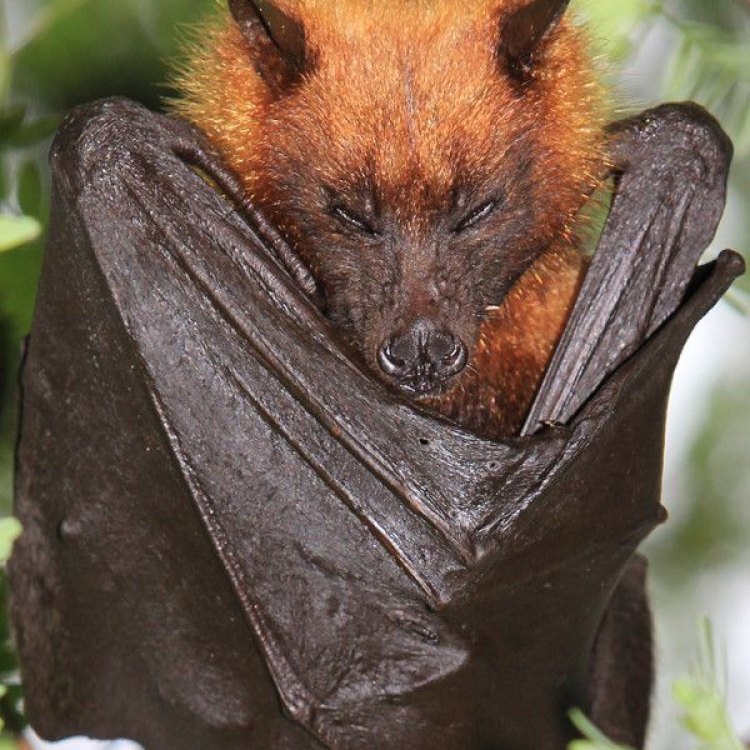
Golden Crowned Flying Fox
- Adult Size: Wingspan of up to 1.5 meters (4.9 feet)
- Average Lifespan: Unknown
- Reproduction: Sexual
- Reproductive Behavior: Polygynandrous (promiscuous)
- Sound or Call: Golden Crowned Flying Foxes produce a variety of vocalizations, including squeaks and screams.
- Migration Pattern: Unknown
- Social Groups: Form large colonies
- Behavior: Nocturnal and arboreal
- Threats: Habitat loss, hunting
- Conservation Status: Endangered
- Impact on Ecosystem: Seed dispersers
- Human Use: Not used by humans
- Distinctive Features: Golden-yellow fur on the forehead and neck
- Interesting Facts: 1. The Golden Crowned Flying Fox is one of the largest bat species in the world. 2. They play a vital role in pollination and seed dispersal in their ecosystems. 3. Their diet primarily consists of fruits, nectar, and flowers. 4. They have a unique ability to carry fruits in their mouths and fly long distances without dropping them. 5. Despite their large size, they are agile fliers and can maneuver through dense vegetation. 6. The species is currently facing threats due to habitat destruction and hunting for bushmeat.
- Predator: Unknown
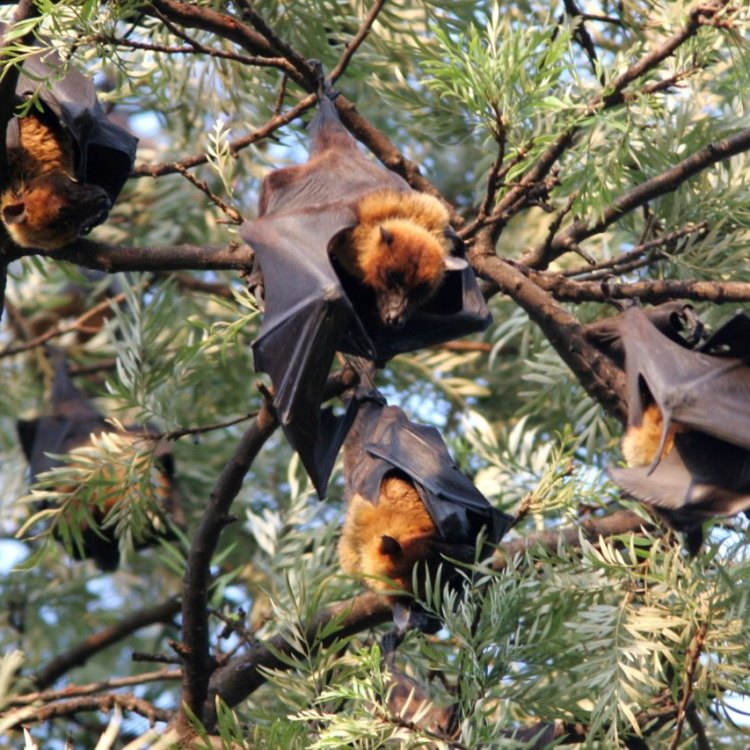
Acerodon jubatus
The Fascinating World of the Golden Crowned Flying Fox
Deep in the rainforests of Southeast Asia, there exists a species of bat that is both elusive and intriguing - the Golden Crowned Flying Fox. With its impressive wingspan of up to 1.5 meters (4.9 feet), this bat is one of the largest in the world PeaceOfAnimals.Com. But its size is just one of the many unique features that make this flying mammal truly fascinating.Despite its impressive size, the Golden Crowned Flying Fox is a master of flight, able to gracefully navigate through dense vegetation. However, their lives are far from just gliding through the night skies. This species plays a vital role in its ecosystem as pollinators and seed dispersers, making them essential for the survival of their habitats. But like many other species, they face a number of threats that put their very existence at risk.
Let's take a closer look at this remarkable creature and discover what makes this bat species so unique.
Appearance and Behavior
With its golden-yellow fur adorning its forehead and neck, the Golden Crowned Flying Fox has a distinctive appearance compared to other bat species. Their wings are a dark brown color, and they have a wingspan of up to 1.5 meters, making them one of the largest bat species in the world Gypsy Cuckoo Bumblebee. Despite their size, they are relatively lightweight, with an average weight of only 1.2 kg (2.6 lbs).These bats have adapted to their nocturnal lifestyle, with large eyes and excellent night vision, helping them navigate and forage for food during the dark hours. They are also arboreal, meaning they spend most of their time in trees. They do not have echolocation like other bats, so they rely heavily on their sense of smell and eyesight to find food and navigate through their surroundings.
Golden Crowned Flying Foxes are social creatures, forming large colonies of up to a thousand individuals in the wild. Within these colonies, the bats communicate using a variety of vocalizations, including squeaks and screams. Their reproductive behavior is polygynandrous, which means they are promiscuous, with multiple mates throughout their breeding season.
Role in Ecosystem
The Golden Crowned Flying Fox plays a crucial role in its ecosystem as both pollinators and seed dispersers. They are essential for the survival of many plants and trees in their habitat, as they help pollinate flowers and disperse seeds over long distances.The bats feed primarily on fruits, nectar, and flowers, making them important for the survival of many plant species. Unlike other pollinators, such as bees or birds, this species can carry large fruits in their mouths and fly long distances without dropping them, furthering their importance in seed dispersal.
Their diet also makes them important for maintaining forest diversity, as they help spread seeds from a wide variety of plants and trees. Without these bats, many plant species would struggle to reproduce, leading to a decline in their populations and potential implications for the overall health and balance of their ecosystem.
Interesting Facts
1. The Golden Crowned Flying Fox is one of the largest bat species in the world, with a wingspan of up to 1.5 meters and a weight of only 1.2 kg.2. In addition to being one of the largest bat species, they also hold the title of being the largest bat in the Philippines.
3. They have a unique ability to carry fruits in their mouths and fly long distances without dropping them, making them crucial for seed dispersal.
4. Despite their large size, they are agile fliers and can navigate through dense vegetation.
5. These bats are vital for pollination and seed dispersal, helping maintain the diversity of plants and trees in their habitat.
6. The species is currently facing threats due to habitat destruction and hunting for bushmeat.
7. They play a crucial role in balancing their local ecosystem, acting as both pollinators and seed dispersers.
8. The Golden Crowned Flying Fox is featured in many traditional stories and folklore in Southeast Asian cultures, symbolizing intelligence and perseverance in the face of danger.
Threats and Conservation Status
Like many other animal species, the Golden Crowned Flying Fox is facing a variety of threats that put its existence at risk. One of the main threats is habitat destruction, as deforestation and urbanization continue to encroach on their natural habitat. This not only affects the bats directly but also disrupts their vital role in pollination and seed dispersal, leading to potential consequences for the entire ecosystem.Hunting is another significant threat to the species. In some regions, the bats are hunted for bushmeat, a practice that not only endangers the population of the Golden Crowned Flying Fox but also disrupts the balance of their ecosystem.
As a result of these threats, the Golden Crowned Flying Fox is currently listed as endangered on the International Union for Conservation of Nature's Red List. Conservation efforts, including protection of their habitat and breeding programs, are essential for helping maintain the population of this unique bat species.
Conclusion
The Golden Crowned Flying Fox may be one of the largest bat species in the world, but its size is just one of the many things that make it such a remarkable creature. From its distinctive appearance and behavior to its vital role in pollination and seed dispersal, this bat species plays an irreplaceable part in its ecosystem.However, the Golden Crowned Flying Fox is facing threats that put its very existence at risk. As humans, it is our responsibility to protect and preserve this incredible species and their habitats to ensure their survival and the balance of their ecosystem. By understanding and appreciating the unique features and importance of the Golden Crowned Flying Fox, we can take steps towards their conservation and help secure their place in the natural world.

The Fascinating World of the Golden Crowned Flying Fox
Disclaimer: The content provided is for informational purposes only. We cannot guarantee the accuracy of the information on this page 100%. All information provided here may change without prior notice.

